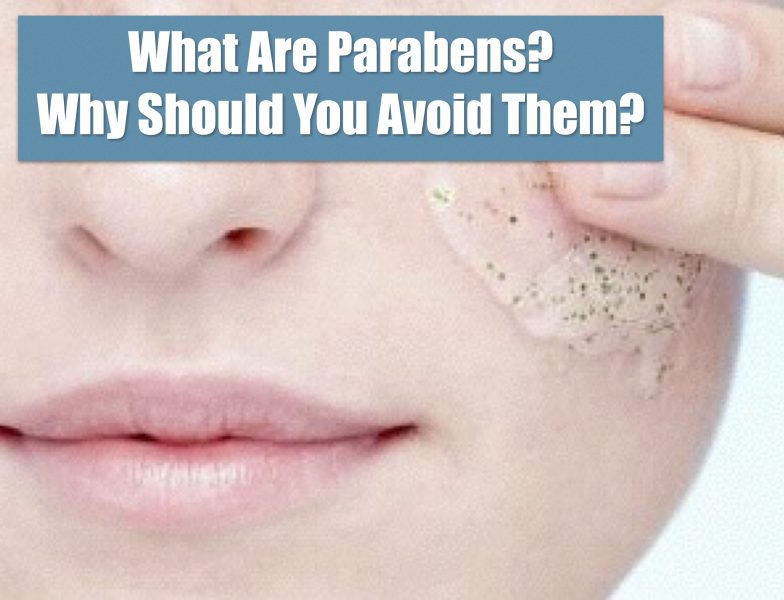What are they?
Parabens are a family of related chemicals that act as preservatives, i.e. they prevent the growth of bacteria and mold. Parabens are esters of para-hydroxybenzoic acid, from which the name is derived. Common parabens include methylparaben (E218), ethylparaben (E214), propylparaben (E216), butylparaben and heptylparaben (E209). All commercially used parabens are synthetically produced, and their efficacy as preservatives, in combination with their low cost, probably explains why parabens are so commonplace.
Where are they used?
Parabens are used in a wide variety of cosmetics, as well as in foods and drugs. Cosmetics that may contain parabens include makeup, moisturizers, hair care products, toothpaste, underarm deodorant and shaving products, among others.
Parabens are also used as a preservative and in packaging and are commonly found in our foods. One study examined eight food groups – beverages, dairy products, fats and oils, fish and shellfish, grains, meats, fruits and vegetables, and analysed them for traces of parabens. All of the food groups contained parabens.
Potential effects of parabens in our bodies
Parabens are absorbed through the skin and the gastrointestinal tract. They have been shown to be endocrine disruptors, effecting the reproductive system.[i] Parabens mimic the action of Estrogen in the body, and thus are implicated in breast cancer. Measurable amounts of 6 different parabens have been identified in breast cancer tumours.[ii] The parabens found in tumours are the same ones used in manufacturing cosmetics. Parabens are also found in almost all urine samples of adolescent and adult women in the USA. Higher amounts of n-propylparaben are found in the part of the breast closest to the underarm area, where most breast cancer tumours are found.[iii]
Infants and toddlers consumed the most parabens in their foods when tallied according to body weight.[iv] The accumulation of parabens in our tissues over our lifetime makes us more susceptible to breast cancer later in life.[v] [vi]
Is the use of Parabens in Cosmetics regulated?
In the US the FDA doesn’t have special rules that apply only to preservatives in cosmetics. The law treats preservatives in cosmetics the same as other cosmetic ingredients.
Under the Federal Food, Drug, and Cosmetic Act (FD&C Act), cosmetic products and ingredients, other than color additives, do not need FDA approval before they go on the market.[vii]
The mainstream cosmetic industry believes that parabens, like most cosmetic ingredients, are safe based on their long term use and safety record. It means that they deem them innocent – until proven guilty. Public interest organizations which raise awareness about cosmetic ingredients believe that further research is necessary to determine the safety of parabens, under the precautionary principle. The controversy around the use of parabens continues, and industry will go on promoting their use until research shows a direct causative link between parabens and breast cancer. As wise consumers, we must keep in mind that cancer is not a single cause ailment, rather it is caused by an accumulation of causes. You could be using cosmetics with parabens and nothing will happen, but it also may just be the final straw.
Are there safe cosmetics?
It is possible now to find cosmetics, shampoos and toothpaste that are paraben-free. Check the labels before buying products. Cosmetic companies that do not use parabens include Aubrey, Weleda, Dr. Hauschka, AnneMarie Borlind Natural Beauty, Logona, Organic Essentials Skincare, and Sante Kosmetics.
The website http://www.ewg.org/skindeep/ provides a green guide to safe cosmetics.
References:
[i] Giulivo M, Lopez de Alda M, Capri E, Barceló D. Human exposure to endocrine disrupting compounds: Their role in reproductive systems, metabolic syndrome and breast cancer. A review. Environ Res. 2016 Nov;151:251-264. Epub 2016 Aug 7
[ii] Darbre, P., Aljarrah, A., & Miller, W. (2004). Concentrations of parabens in human breast tumours. J Appl Toxicol, 24, 5–13.
[iii] Barr, L., Metaxas, G., Harbach, C. A. J., Savoy, L. A., & Darbre, P. D. (2012). Measurement of paraben concentrations in human breast tissue at serial locations across the breast from axilla to sternum. J Appl Toxicol, 32(3), 219–232.
[iv] Liao C, Liu F, Kannan K. Occurrence of and dietary exposure to parabens in foodstuffs from the United States. Environ Sci Technol. 2013 Apr 16;47(8):3918-25.
[v] Khanna S, Dash PR, Darbre PD. Exposure to parabens at the concentration of maximal proliferative response increases migratory and invasive activity of human breast cancer cells in vitro. J Appl Toxicol. 2014 Mar 20.
[vi] Isling LK, Boberg J, Jacobsen PR et al. late-life effects on rat reproductive system after developmental exposure to mixtures of endocrine disrupters. Reproduction. 2014 Mar 2;147(4):465-76.
[vii] http://www.fda.gov/Cosmetics/ProductsIngredients/Ingredients/ucm128042.htm




